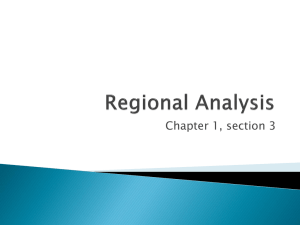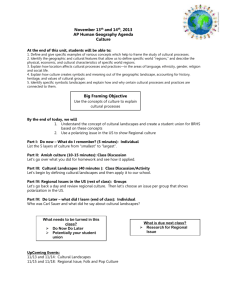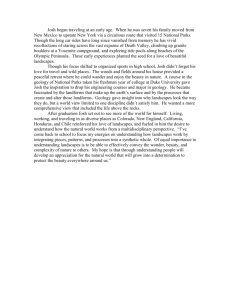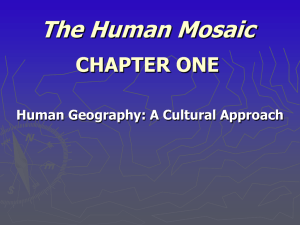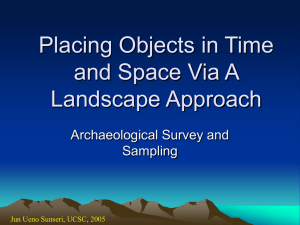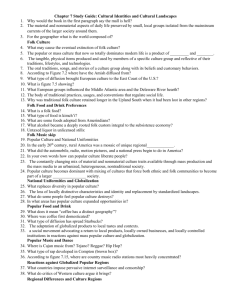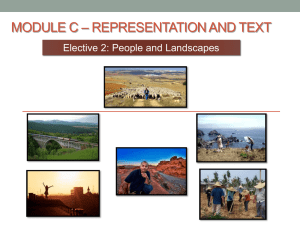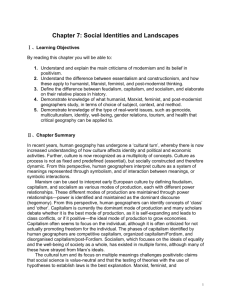Cultural Identities & Landscapes 1
advertisement
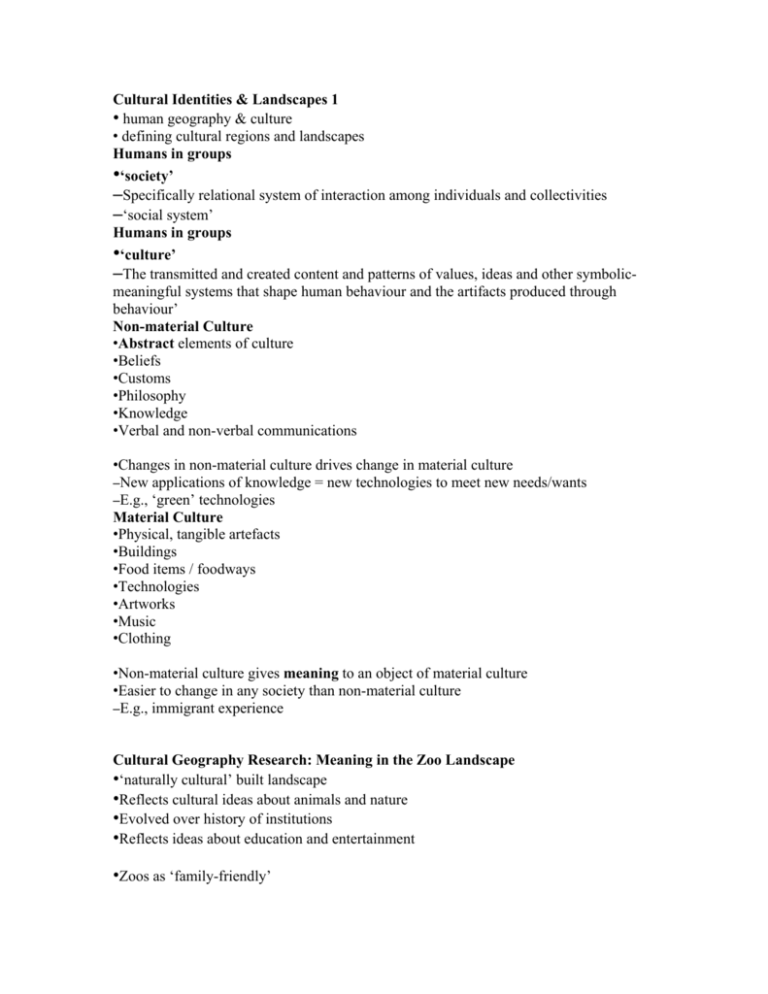
Cultural Identities & Landscapes 1 • human geography & culture • defining cultural regions and landscapes Humans in groups •‘society’ –Specifically relational system of interaction among individuals and collectivities –‘social system’ Humans in groups •‘culture’ –The transmitted and created content and patterns of values, ideas and other symbolicmeaningful systems that shape human behaviour and the artifacts produced through behaviour’ Non-material Culture •Abstract elements of culture •Beliefs •Customs •Philosophy •Knowledge •Verbal and non-verbal communications •Changes in non-material culture drives change in material culture –New applications of knowledge = new technologies to meet new needs/wants –E.g., ‘green’ technologies Material Culture •Physical, tangible artefacts •Buildings •Food items / foodways •Technologies •Artworks •Music •Clothing •Non-material culture gives meaning to an object of material culture •Easier to change in any society than non-material culture –E.g., immigrant experience Cultural Geography Research: Meaning in the Zoo Landscape •‘naturally cultural’ built landscape •Reflects cultural ideas about animals and nature •Evolved over history of institutions •Reflects ideas about education and entertainment •Zoos as ‘family-friendly’ •Environments to practice being ‘proper families’ –Record moments of family integration and emotional ‘togetherness’ –See patterns of interaction, symbolic placement in zoo setting The Super-organic Concept of Culture •Proposed by anthropologist Alfred Kroeger early 20th century •Heavily influenced contemporary, geographer Carl Sauer and his critique of environmental determinism •Culture as causal agent –Overwhelms the individual –Historicist •Influential still in (American) cultural ‘Sauerian’ geography –Cultural ecology, more positivist look at how humans modify the landscapes Cultural Regions •Geographical units based on characteristics or functions of culture •Material and non-material •3 types: –Formal –Functional –Vernacular Formal Cultural Region •Area inhabited by people with one or more cultural traits in common –Language, religion •Relatively homogeneous •‘Fuzzy’ borders as cultures overlap and mix –Tendency to a central core area and peripheral areas –Characteristics present, but weaker, less prevalent as move out from core Functional Cultural Region •Area organized to function politically, socially and economically as one unit •Not necessarily homogeneous •Nodes, where functions are coordinated and directed •May have clearly defined borders –Quebec, a francophone functional cultural region in Canada? Vernacular Cultural Region •Perceived to exist by inhabitants •Often a widespread acceptance of a regional name –E.g., ‘Dixie’, ‘Flatlander’…others? •Identify with physical feature, economic, political and/or historical characteristic •Lacks sharp boundaries •Not homogeneous like formal regions •Grows out of sense of belonging & identification •Cultural landscapes give us a sense of place. –reveal our relationship with the land, and the natural world, over time. •They provide scenic, economic, ecological, social, recreational, and educational opportunities •They help individuals, communities and nations understand themselves. Four types •Historic sites –Forts, battlefields, homes of historical figures •Designed landscapes –Parks, university campuses •Vernacular landscapes –Agricultural landscapes, villages •Ethnographic landscapes –Heritage resources identified with particular groups Historic Sites as Cultural Landscapes •Significant for association with an historic event, activity or person •Preservation of cultural heritage •Tells story of identity as a people, region, and/or nation –Interpretations vary Designed Landscapes •Consciously designed by a professional –(landscape) architect, horticulturalist •Associated with significant persons, trends or events •Aesthetic values important Designed Landscapes Central Park, Manhattan NY Vernacular Landscapes •Evolved over time through use •Activities / occupancy shape the landscape •Through cultural attitudes, landscapes reflect character of everyday life •Historic and contemporary Ethnographic Landscapes •Areas with a variety of natural and cultural resources •Defined as ‘heritage resources’ by an associated people –E.g., religious sacred sites •Can include plant communities, ceremonial grounds as components
